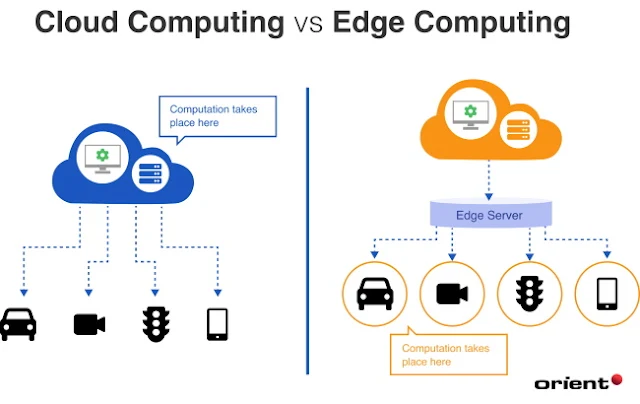In recent years edge computing has been much hyped as a potential game changer in the cloud industry. However, in almost all cases, cloud computing will continue to be used alongside the edge. This decoder article compares cloud versus edge computing and discusses the benefits of each.
What is the difference between the edge and the cloud?
Edge computing is a subsection of cloud computing. While cloud computing is about hosting applications in a core data centre, edge computing is about hosting applications closer to end users, either in smaller edge data centres or on the customer premises instead.
In recent years there has been significant growth in edge computing adoption. Telcos and tech companies have been talking about the move to the edge, and what this means for them. Edge computing may enable a whole host of new use cases and applications for enterprises to run.
Edge computing means bringing physical compute closer to the data source or end-user. Hosting compute at the edge will bring lower latency, as well as other potential benefits such as higher security. There are different types of edge data centres (as highlighted in our previous article, ‘Edge data centres: What and where?’) that exist anywhere from on customer premises to large regional data centres hosting hundreds of customers in colocation facilities.
This is compared to cloud computing, which is an older concept where compute is hosted in large hyperscale data centres much farther from the data source. These will be very large facilities owned and operated by hyperscalers such as Google, Microsoft, and Amazon.
Why is cloud computing so important?
Cloud computing has provided benefits to users for more than two decades. It allows users to store and process their data at a much lower cost and effort level. Cloud providers store and process data in large data centres which allows them to take advantage of economies of scale and provide their services to enterprises or consumers at very low cost. They are reliable and provide innovation that all customers can benefit from.
Public clouds are those actually owned and operated by the hyperscaler themselves, such as Microsoft Azure or Amazon Web Services, including all the hardware, software, and infrastructure. Hyperscale data centres will also host some private clouds for use by individual enterprises.
Advantages of edge computing over cloud computing
Edge computing provides numerous benefits over cloud computing which is why there has been a trend towards it. Reducing latency enables use cases that were far less feasible when data had to transfer the whole way back to the cloud.
Examples of use cases enabled by lower latency include:
- AR/VR use cases
- Autonomous cars
- Cloud gaming
- Smart grid
When edge compute is hosted on customer premises, this also results in higher data security than if using the cloud. Data that is sent back to the cloud is vulnerable to being intercepted by potential hackers. Data is also protected by the data privacy laws of the country in which it is being stored – therefore, European companies may want to ensure that their data is stored within Europe so that GDPR compliance still applies. This can be achieved through edge data centres and demonstrates why edge is especially valuable for industries such as healthcare or manufacturing which require high levels of data security.
The precursor to the edge consists of proprietary, on-premise solutions. These legacy servers would allow enterprises to store data in a secure way but would be rigid and limited in terms of scalability and the applications that could be run on them.
Will edge computing replace cloud computing?
The edge has some clear benefits over the cloud, but this does not mean that we will see a decline in cloud computing. Indeed, as digitalisation continues more and more applications will move to the cloud, but increasingly the edge computing sector will grow too.
Cloud computing, in massively reducing the cost of storing and processing data, has been one of the major contributors to digital transformation over the past two decades. What edge computing is now doing is enabling even more applications and improving many of those that previously ran only on traditional on-premise compute. Many applications that use the edge will simultaneously use the cloud, doing real-time processing of data at the edge, taking advantage of lower latency, while storing and processing large amounts of data not needed in real-time in the cloud. There will not be many applications which live exclusively at the edge.
The edge is a spectrum of different types of data centres and these each suit different applications, with those further away from the data source or end-user acting more cloud-like. The edge and the cloud do not compete but they complement each other, and the cloud will only continue to complement the edge as it grows out and becomes more mature.
Article first appeared on STL Partners

